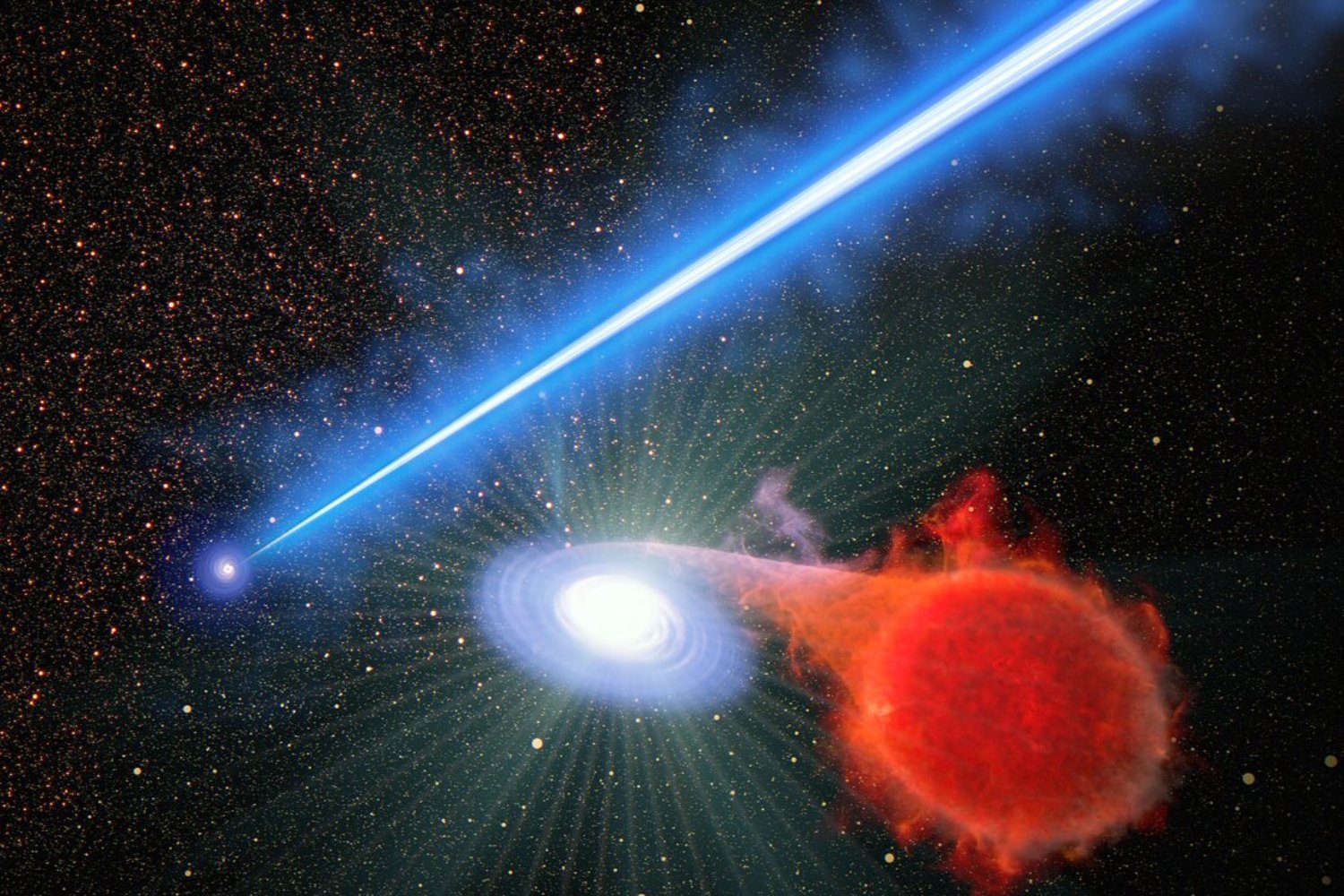Black hole jets, which spew near-light-speed particle beams, can trigger nearby white dwarf stars to explode by igniting hydrogen layers on their surfaces. “We don’t know what’s going on, but it’s just a very exciting finding,” said Alec Lessing, an astrophysicist at Stanford University and lead author of a new study describing the phenomenon, in an ESA release. Gizmodo reports:
In the recent work – set to publish in The Astrophysical Journal and is currently hosted on the preprint server arXiv – the team studied 135 novae in the galaxy M87, which hosts a supermassive black hole of the same name at its core. M87 is 6.5 billion times the mass of the Sun and was the first black hole to be directly imaged, in work done in 2019 by the Event Horizon Telescope Collaboration. The team found twice as many novae erupting near M87’s 3,000 light-year-long plasma jet than elsewhere in the galaxy. The Hubble Space Telescope also directly imaged M87’s jet, which you can see below in luminous blue detail. Though it looks fairly calm in the image, the distance deceives you: this is a long tendril of superheated, near-light speed particles, somehow triggering stars to erupt.
Though previous researchers had suggested there was more activity in the jet’s vicinity, new observations with Hubble’s wider-view cameras revealed more of the novae brightening – indicating they were blowing hydrogen up off their surface layers. “There’s something that the jet is doing to the star systems that wander into the surrounding neighborhood. Maybe the jet somehow snowplows hydrogen fuel onto the white dwarfs, causing them to erupt more frequently,” Lessing said in the release. “But it’s not clear that it’s a physical pushing. It could be the effect of the pressure of the light emanating from the jet. When you deliver hydrogen faster, you get eruptions faster.” The new Hubble images of M87 are also the deepest yet taken, thanks to the newer cameras on Hubble. Though the team wrote in the paper that there’s between a 0.1% to 1% chance that their observations can be chalked up to randomness, most signs point to the jet somehow catalyzing the stellar eruptions.



…anymore.
Ever. It’s not entirely known how supermassive black holes formed, but it’s definitely not from stars. They’re millions of times as massive as the sun.
The sun is not the biggest star around
Be that as it may, you clearly don’t know what you’re taking about and aren’t interested in learning.
You are correct in the first part. It’s always good to learn things. Do you have anything to teach?
Sorry, I was being cranky.
Supermassive black holes (SMBs) are much, much bigger than any star. If you look at this Wikipedia article, you’ll see that the theoretical limit for star size is in the neighborhood of 300 times the mass of the sun. SMBs are at least hundreds of thousands of times more massive than the sun, up to billions of time more massive. They are also probably older than any star because they had to exist the form the seeds of galaxies. One of the open questions in astrophysics right now is how SMBs formed as quickly as they did, because there’s a limit on how quickly a black hole can absorb matter. Any faster than that limit, and the matter falling into the black hole is so hot and dense that a lot of it gets blown outward.
If you find this stuff at all interesting, I recommend checking out PBS Space Time on YouTube, particularly their black hole episodes.
Thanks for the education, and no worries! We all get a bit cranky sometimes.
Off to do some research!